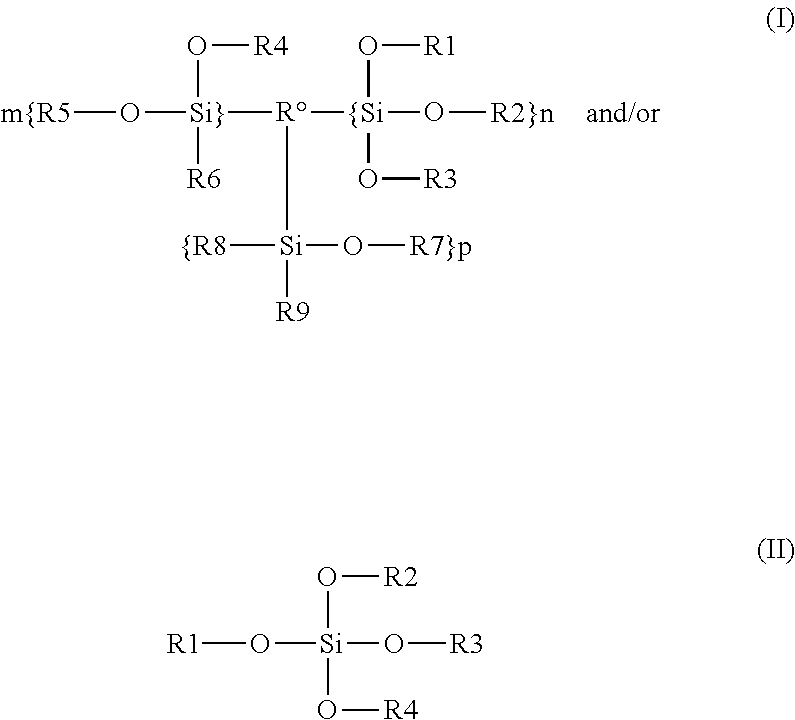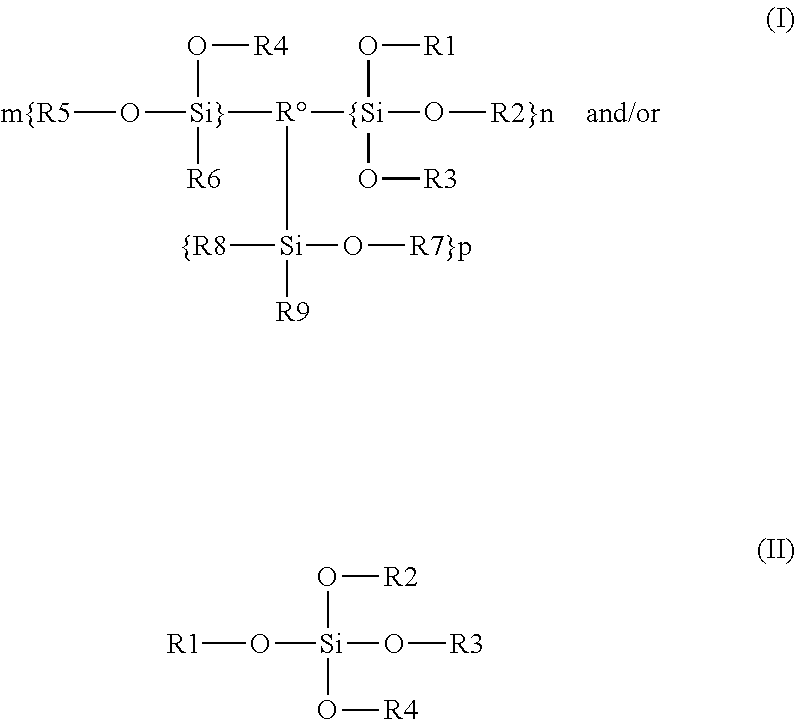Process for manufacturing double-walled microcapsules, microcapsules prepared by this process and the use thereof
a technology of double-walled microcapsules and manufacturing processes, which is applied in the direction of biocide, plant growth regulators, essential oils/perfumes, etc., can solve the problems of high residual formaldehyde content of microcapsules, difficult and expensive manufacturing of microcapsules, and inability to meet the needs of us
- Summary
- Abstract
- Description
- Claims
- Application Information
AI Technical Summary
Benefits of technology
Problems solved by technology
Method used
Image
Examples
example 1
Microcapsules Containing a Mosquito Repellent
[0091]The following are put in an 800-cm3 beaker maintained at 30° C., with stirring:[0092]300 g of tap water[0093]48.6 g of Lupasol PA 140 (BASF) (acrylamide: protective colloid)[0094]52.5 g of a melamine-formaldehyde resin (Luracoll SD BASF)
[0095]The stirrer is equipped with a deflocculating turbine with a diameter of 7 cm. The stirring speed is increased to 900 rev / min. Then a homogeneous mixture of 216 g of Chinese citronella and 24 g of ethyl polysilicate (TES 40 Wacker) is emulsified in the aforesaid aqueous mixture.
[0096]To polymerize the whole, it is acidified with 11.1 g of 10% formic acid to a pH of about 3.5.
[0097]The temperature is maintained at 35° C. for 2 h, during which time the stirring speed is set at about 1500 rev / min so as to obtain an average microcapsule diameter of 6 μm.
[0098]Once this diameter is obtained, the speed is reduced to 1.200 rev / min and then the temperature is raised to 80° C. for 2.5 h for complete pol...
example 2
Microcapsules Containing a Menthol Perfume
[0100]The following were put in a 500-cm3 beaker maintained at 35° C., with stirring:[0101]110 g of tap water[0102]16 g of Lupasol PA 140 (BASF)[0103]15 g of a melamine-formaldehyde resin (Cyme! 373 from Cytex)
[0104]The stirrer is equipped with a propeller with 5 straight blades with a diameter of 6 cm.
[0105]The stirring speed is increased to 750 rev / min and then a homogeneous mixture of 86 g of menthol perfume, 5.6 g of ethyl polysilicate (TES 40 Wacker), 2.8 g of methyltriethoxysilane and 1.2 g of MTMO (mercaptopropyltrimethoxysilane) is emulsified in the aforesaid aqueous mixture.
[0106]To polymerize the whole, it is acidified with 4.4 g of 10% formic acid; the pH is then 3.5.
[0107]The temperature is maintained at 35° C. for 2.5 h and then at 45° C. for 1 h, during which time the stirring speed is set at 1100 rev / min so as to obtain an average particle diameter of 15 μm, then it is decreased to 900 rev / min. The temperature of the reaction ...
example 3
Microcapsules Containing a Perfume
[0110]1) Preparation of the Silicone Monomer A:
[0111]The following are mixed in a beaker protected from oxygen and moisture (circulation of dry nitrogen):[0112]0.01 mole of ETTMP 700 (ethoxylated trimethylolpropane tri-3-mercapto-propionate 700) sold by Bruno Bock, i.e. 7.08 g[0113]0.025 mole of glymo (gamma-glycidoxytrimethoxysilane), i.e. 5.9 g.
[0114]The whole is mixed and maintained at 60° C. for 10 h and then cooled to room temperature.
[0115]2) Encapsulation
[0116]111 g of Blue Wave perfumed expressions perfume is mixed so as to obtain a transparent solution with 6.0 g of silicone monomer A prepared previously and 14.8 g of ethyl polysilicate TES 40 from Wacker. This mixture will constitute the internal phase of the microcapsules.
[0117]130 g of water, 24 g of Lupasol PA140 from BASF (protective colloid) and 8.5 g of melamine-formaldehyde resin Beetle PT336 from BIP are then put in a beaker heated to 30° C.
[0118]The internal phase prepared previou...
PUM
| Property | Measurement | Unit |
|---|---|---|
| temperature | aaaaa | aaaaa |
| temperature | aaaaa | aaaaa |
| diameter | aaaaa | aaaaa |
Abstract
Description
Claims
Application Information
 Login to View More
Login to View More - R&D
- Intellectual Property
- Life Sciences
- Materials
- Tech Scout
- Unparalleled Data Quality
- Higher Quality Content
- 60% Fewer Hallucinations
Browse by: Latest US Patents, China's latest patents, Technical Efficacy Thesaurus, Application Domain, Technology Topic, Popular Technical Reports.
© 2025 PatSnap. All rights reserved.Legal|Privacy policy|Modern Slavery Act Transparency Statement|Sitemap|About US| Contact US: help@patsnap.com



